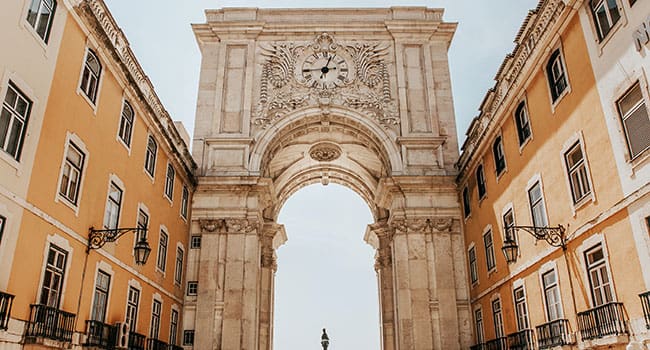 With its strategic location on the coast of Portugal, and its rich historical background, Lisbon offers diverse attractions that any tourist will find exciting and interesting. The warm waters of its beaches are a must during summer while it impressive towers, palaces and museums beckon tourists to explore all year round.
With its strategic location on the coast of Portugal, and its rich historical background, Lisbon offers diverse attractions that any tourist will find exciting and interesting. The warm waters of its beaches are a must during summer while it impressive towers, palaces and museums beckon tourists to explore all year round.
Lisbon‘s small quarters, locally known as barrios, are a delight to explore. Cobblestone streets and narrow alleyways offer visitors a glimpse of Lisbon’s history going back 20 centuries. Although many of its buildings were destroyed in the great earthquake of 1755, there remain a few old structures that reflect Lisbon’s illustrious past.
For a good historical look at Lisbon, start from the Alfama District. It is located in the oldest part of the city, which sprawls down a side of a hill on which Castelo de Sao Jorge stands. It still features the same winding streets of thousands of years ago. Colourful overhanging buildings and narrow alleyways are a picturesque delight straight from a postcard. Lisbon is home to the first church in Portugal, the cathedral of Se de Lisboa, built during the 12th century.
Another long-standing location to visit is the Bairro Alto district, which dates back to 1513. It literally means the Upper City and is a favourite destination for many tourists. It has many stylish cafes and bars that feature traditional Portuguese music known locally as fado. Ancient buildings still line its narrow and winding streets, making it an idyllic place for a relaxing stroll.
For a 360-degree view of the city, head to the Castelo de Sao Jorge or the Sao Jorge Castle. This ancient ruin was home to the Portuguese kings for over 300 years. Its history dates back to 10th century when Moors first occupied the city and it has been standing sentry atop the hill for thousands of years as a fortress against marauders.
The Tore de Belem is another impressive structure in Lisbon. Since 1521 it has continuously served as a lookout tower and fortress for the city. Its architecture is truly impressive, with its arcaded windows, Venetian inspired mezzanines and Gothic-style interiors. The view from its tower is breathtaking and should not be missed by any visitor.
Construction of the Mosteiro dos Jeronimos, another landmark important to the city, was started in 1502 and took almost a century to complete. The people of Lisbon believe that a miracle spared the monastery from the massive destruction of the earthquake in 1755. Now, the monastery continues to serve as a sanctuary of prayer, especially for seafarers who are about to embark on a long voyage.
Lisbon also features many remarkable museums. One is the Museu da Marinha, established in 1863. It houses more than 17,000 exhibits and is considered one of the most significant maritime museums in Europe. Another notable museum is the National Azulejo Museum or the National Tile Museum which features a delightful collection of decorative tiles, both religious and secular, dating from the 15th century.
BECOME A TRAVEL LIKE THIS CONTRIBUTOR
Contact us for details.
The views, opinions and positions expressed by columnists and contributors are the author’s alone. They do not inherently or expressly reflect the views, opinions and/or positions of our publication.


